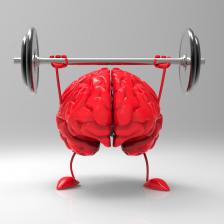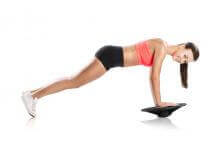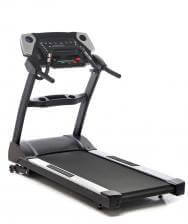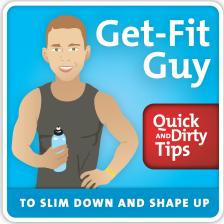5 Ways to Get Smarter While You Exercise
Learn the 5 ways that you can train your brain to become more fatigue-resistant and actually get smarter while you exercise.
Ben Greenfield
Listen
5 Ways to Get Smarter While You Exercise

The first article appeared in Runners World magazine and investigated something called “brain plasticity” in skill sports versus endurance sports. Brain plasticity basically refers to the ability of the brain to grow new neurons and neuronal pathways.
Skill sports are sports that require some kind of fine motor skill and attention to detail and strategy, such as tennis, golf, gymnastics, dance, and basketball, to name a few. Endurance sports, on the other hand, refer to chronic repetitive motion activities such as swimming, cycling, or running.
The article explains that skill sports produce far more brain plasticity than endurance sports. The author isn’t saying that swimming, cycling and running require no skill output whatsoever, but they certainly require less of a skill component than, say, hitting a golf ball 250 yards.
The second article on this topic appeared in Outside magazine and explained that you can actually train your brain to be more resistant to fatigue just like you can train your muscles. Brain training includes activities that make your brain “tired” such as crossword puzzles, sudoku, or those brain-training smartphone apps like Brainscape, Lumosity, or N-back training.
The end result is that as you play these types of brain games, you’re actually training your brain to be less susceptible to fatigue when it really counts, such as in the clutch game of a tennis set, or shooting the game-deciding free throw in the fourth quarter, or completing that quadruple pirouette in the final scene of Swan Lake.
The fact is that when your brain “gets tired,” it can actually result in your body prematurely giving up, even during less mindful activities such as running a marathon or competing in a bicycle race.
Now that you know that your brain can become more agile and fatigue-resistant, let’s jump into 5 ways that you can use this information to actually get smarter while you exercise:
Tip #1: Train Your Balance
Sure, you may not have a regular habit of playing tennis, hitting a golf ball, or dancing professionally, but that doesn’t mean your routine trip to a gym or health club can’t involve activities that challenge your eyes, your ears, and your joints – which all keep your brain firing when they’re stimulated.

Whichever device you choose, simply keep it next to your desk at work and hop on for a few minutes to build your balance. Use this as an opportunity for some downtime from staring at your computer screen. At home, keep it in your living room and practice your balance while watching TV.
Tip #2: Break Up Your Run
If you’re a runner, and you’re concerned that your endurance activity might not be challenging enough for your brain, then try some of these tips:
-
Run on varied terrain such as trails, parks, or even urban areas with lots of stairs, twists, and turns.
-
Google the name of your city and the word “parkour” to see if there are any parkour classes or groups in your area. Parkour involves using the local environment as a sort of grown-up playground that you jump on, balance on, etc.
-
Try injecting stops into your run to do things like backwards crawls, single leg hops, or “box jumps” onto park benches. This mix will keep your muscles and your brain working.
-
Put on headphones that play music that is at 180bpm (beats per minute) and try to train your feet to keep up with the beat. This is also a great way to learn to run faster! An example of a song that is 180bpm is Tina Turner’s “River Deep – Mountain High.”
Tip #3: Pick Up a Ball Sport

For example, in the morning, before I do my daily yoga routine, I’ve been breaking out the ping pong paddles and hitting the ball as fast I can 100 times against the wall. I also occasionally sport my 20-pound weighted vest and go play a round of Ultimate Frisbee at the park. I’ve also been known to stand outside in my driveway with the tennis racquet and practice hitting the ball against the garage door without the ball touching the ground.
As a warm-up for some workouts, I skip the treadmill or bike and instead I play “Around the World” with a basketball hoop and ball. I’ve even tried juggling balls when going out for a run and hitting the golf course early with just 2-3 clubs for a rapid paced round of running “Speed Golf.”
Once you begin thinking outside the box about ways that you can combine fitness and a ball-sport, you’ll realize all sorts of creative ways you can train your body and brain simultaneously!
Tip #4: Use a Treadmill Workstation

See also: 7 Ways to Burn Calories by Standing More
Your balance will be challenged, plus you’ll be forced to combine aerobic movement with cognitive tasks such as writing, phone calls, and reading. This combination of thinking and exercising is a potent one-two punch for improving brain plasticity. Even if you can’t have a treadmill workstation at your office, consider putting one in your home to use during phone calls, while doing the taxes, opening mail, or simply surfing the web.
Tip #5: Use Brain Training Apps
I mentioned a few brain training apps at the beginning of this episode. Whether you choose Lumosity, Brainscape, N-back training, or some other system, you’ll challenge your brain with memory work, geometrical puzzle solving, trivia, and more.

Do you have questions about how to get smarter while you exercise? Then head over to Facebook.com/GetFitGuy and ask your questions or join the conversation there!

